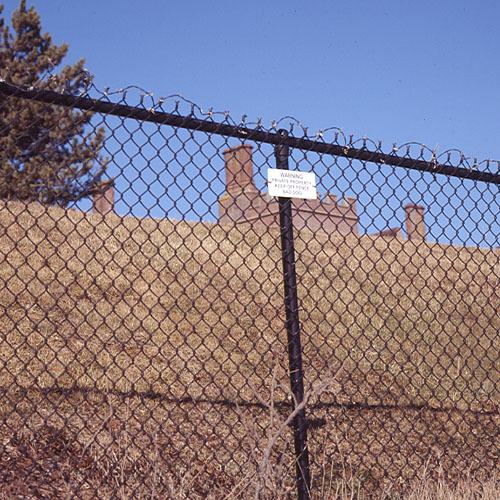Problem: You have a seaside estate, but between your back yard and the ocean is a busy public path traveled by all sorts of unpleasant undesirables. You want to keep out the riffraff, but you don’t want to spoil the view to the ocean with an unsightly fence. What do you do?
Solution: Here’s something I saw along the Cliff Walk in Newport last week. Basically it’s a lawn that drops off dramatically at the edge. And hidden inside the dropoff area is this unfriendly fence. It probably looks gorgeous from the house, with the lawn seeming to stretch to the edge of the rocky shore. But it looks hostile as hell from the public trail.

It’s not exactly a classical ha-ha, but close. The original ha-has were basically retaining walls that were sunk in a trench, giving the impression that your estate extended to the horizon. Credited to the seventeenth-century British garden designer Charles Brdgeman, it was used extensively and most famously by Capability Brown in his expansive English countryside garden designs.
Photo taken at Castle Ashby, Northants by R Neil Marshman under GNU license. The ha-ha is just on the other side of the near tree.
It also is a Western take on borrowed scenery, the Japanese notion of shakkei, “landscape which is captured alive,” a technique of garden planning where you incorporate the view into your garden design. So…the British gentry, the Japanese nobles, the gilded Americans, they’re pretty similar in at least this regard: They all want you to think they have even more than they have.
